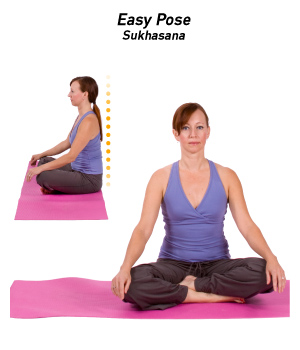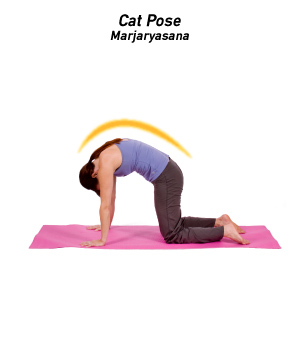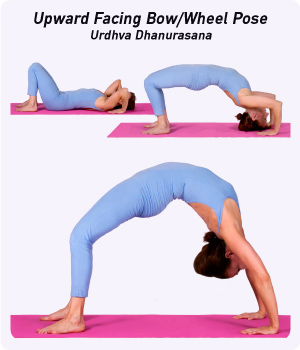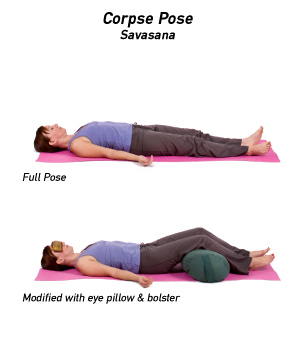An Introduction to Yoga Sequences

If you've ever been to a yoga class or watched a yoga DVD, you may have noticed that the poses are presented in a particular order. This order is called a sequence, and a "yoga sequence" refers to the structure and flow of a yoga class. Sequencing a well-rounded class is an art. There are many different approaches and details your teacher may consider when designing a class.
The order, complexity, and variety of poses will differ between yoga traditions and instructors. A Kundalini class will be clearly distinct from a Bikram class, which in turn will be unlike a Restorative, Vinyasa, Viniyoga, or Integral class. Yet each of those sequences has been designed for particular benefits, according to that style of yoga.
Keeping in mind that there is no singular, fixed sequence or style of sequencing, the components of a yoga practice typically include:
- Opening
- Warm up
- Standing poses
- Peak pose(s)
- Floor poses
- Cool down
- Final relaxation, or Savasana
Most classes will include some combination of standing and seated poses, and appropriate levels of twists, inversions, backbends, forward bends, and strength-building moves. All of these poses will stretch your body and relax your mind, so it doesn't matter what style of yoga you decide to practice — you'll still be practicing yoga and gaining all of the benefits! Below is a deeper exploration of the major elements that go into a yoga sequence.
Opening

Transitioning from the hustle and bustle of everyday life to the soothing serenity of a yoga class can be difficult for some students. Setting time for students to get centered, relaxed, and focused is a common way to open a practice. Many classes begin with a short meditation and breath work (pranayama), either seated or lying down in Corpse Pose (Savasana). This helps settle your mind, bringing awareness to the present moment and preparing you for practice. Some classes may also include chanting at this time.
Warm Up

Next, you may do some simple warm-up moves like neck rolls and Cat-Cow Pose, or you may transition right into a dynamic warm-up series of poses like Sun Salutations (Surya Namaskara). The warm-up portion helps to get your blood flowing, which increases your body temperature and oxygen supply. This helps to prevent muscle soreness in the upcoming poses and also prepares your muscles, joints, and connective tissues for more challenging postures.
Try setting an intention at the beginning of your practice. It can be related to your life, your job, or even a quality you're cultivating, such as patience, generosity, or gratitude. Keep it simple and real. State it inwardly or out loud, then release the intention and your emotional connection to it. Allow your practice to help bring it forth through the unification of your mind, body, and spirit.
Standing Poses

Some yoga traditions believe that standing poses are the safest way to open the body. Standing poses include the Warrior series (Virabhadrasana I, II, and III), balancing poses like Half Moon (Ardha Chandrasana), and strength-building poses like Chair Pose (Utkatasana) — plus countless others.
Teachers may also sometimes place arm balances and abdominal strengtheners in with the standing poses, like Crow Pose (Bakasana) and Boat Pose (Navasana). This is because they require more stamina than you might have later on in the practice.
Peak Pose

Many yoga classes will build up to a pose or series of poses that require more strength, flexibility, and awareness than you may have in the beginning or end of class. In some cases, this climactic pose may be an inversion like Handstand (Adho Mukha Vrksasana), a backbend like Upward Bow / Wheel Pose (Urdhva Dhanurasana), or a deep forward fold like Sleeping Yogi (Yoganidrasana).
The "peak" could also be a body part that the sequence intends to focus on — shoulders or hamstrings, for example — or even something completely different, like a specific meditation or chant that you are now fully prepared to practice.
Floor Poses
.jpg)
Poses practiced on the floor are not necessarily exempt from being "peak" poses. However, as the practice moves toward the cool-down period, many of the poses that help to neutralize the effects of more strenuous postures take place on the floor. These can include twists, seated forward folds, and hip openers like Bound Angle / Cobbler's Pose (Baddha Konasana).
Cool Down

The final poses of a yoga practice are intended to balance and harmonize your body's equilibrium, while calming your mind, breath, and emotions. They help to prepare your body for the final relaxation portion, and help you shift gears as you dial your awareness inward and begin to withdraw your senses. These poses are often supine, like Reclined Bound Angle / Cobbler's Pose (Supta Baddha Konasana) or Reclining Big Toe Pose (Supta Padangusthasana). In some traditions they may also include "cooling" inversions like Headstand (Sirsasana) or Shoulderstand (Sarvangasana).
Savasana

The final relaxation posture, Corpse Pose (Savasana) brings you into deep states of renewal and restoration. As your body releases in a completely neutral position, your mind begins to settle and deep states of self-awareness and meditation can emerge freely. Your parasympathetic nervous system is stimulated, producing a "rest and digest" response throughout your body. This counteracts your sympathetic nervous system's stress-induced "fight or flight" effect. Profound peace can occur.
Do not try and bend the spoon. That's impossible. Instead, only try to realize the truth…. Then you'll see that it is not the spoon that bends, it is only yourself.
Get With the Flow
Your yoga practice will be influenced by many factors, including the teacher, the environment, your own intent, state of mind, etc. The yoga sequence may leave you feeling energized, deeply relaxed, or spiritually connected. Hopefully some wonderful combination of all three! Just remember that no two classes are ever the same, even if the sequence never varies. Your experience on your mat will be unique every single time.

